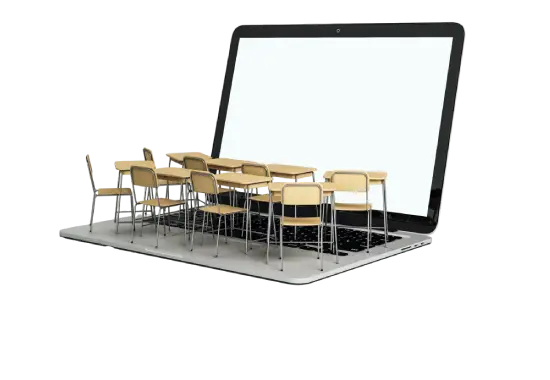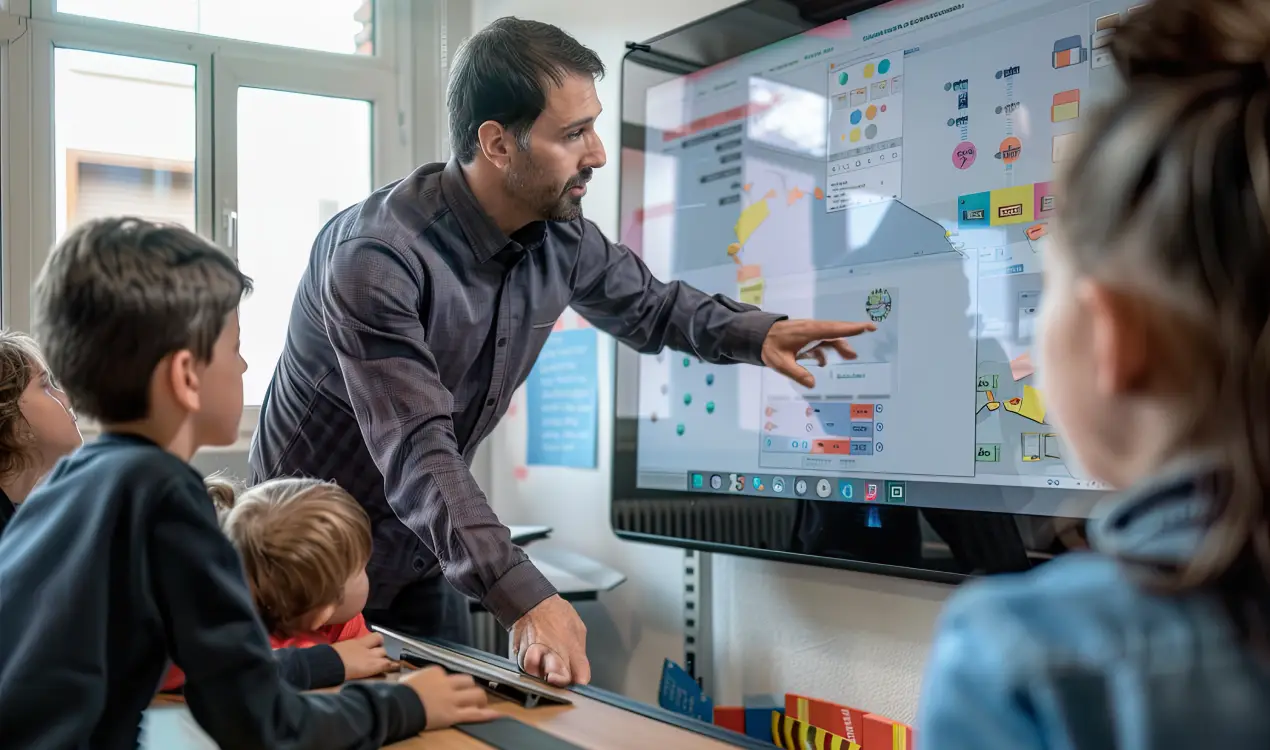Digital Classroom Solutions




Digital Classroom Solutions
Digital Classroom Solutions are advanced technology-driven tools and platforms designed to enhance the traditional learning environment by incorporating digital resources, interactive content, and collaborative learning features. These solutions aim to create a dynamic, engaging, and personalized educational experience for both students and educators, bridging the gap between traditional teaching methods and modern digital technology.
With the rapid evolution of technology, educational institutions are adopting digital classroom solutions to improve the overall learning experience, streamline administrative tasks, and prepare students for the demands of the modern digital world. These solutions typically integrate hardware, software, and cloud-based platforms, creating an interconnected environment that supports both in-person and remote learning.
Key Components of Digital Classroom Solutions:
1. Interactive Whiteboards (Smart Boards):
- Description: Interactive whiteboards replace traditional blackboards and allow teachers to display lessons, multimedia content, and interactive activities in real time. Students can actively participate by touching the screen, drawing, or answering questions directly on the board.
- Benefits: These boards facilitate dynamic lessons, encourage student engagement, and enable the integration of multimedia resources like videos, animations, and online content into the curriculum.

2. Learning Management Systems (LMS):
- Description: An LMS is a software platform used to manage, deliver, and track online learning content and activities. It provides a centralized system for course creation, assignment submission, grading, and communication between students and teachers.
- Examples: Moodle, Canvas, Google Classroom, Blackboard.
- Benefits: LMS platforms allow teachers to upload resources, track student progress, offer online assessments, and facilitate communication between educators and learners.
3. E-Books and Digital Content:
- Description: Digital classrooms often replace traditional textbooks with e-books, PDFs, or interactive digital content. These resources can be updated in real time and accessed from any device, giving students the flexibility to learn from anywhere.
- Benefits: E-books reduce the need for physical materials, are often more affordable, and can include interactive features such as quizzes, videos, and hyperlinks to external resources.
4. Virtual Classrooms and Video Conferencing:
- Description: Virtual classroom software enables real-time communication between students and instructors, often with video, voice, chat, and screen-sharing capabilities. These tools are particularly useful for remote learning or hybrid classroom models.
- Examples: Zoom, Microsoft Teams, Google Meet, Cisco WebEx.
- Benefits: Virtual classrooms enable seamless communication and learning for remote students, ensuring that lessons can continue even when students are not physically present.
5. Cloud Storage and Collaboration Tools:
- Description: Cloud storage solutions such as Google Drive, OneDrive, or Dropbox allow students and teachers to store, share, and collaborate on documents and assignments. These tools facilitate collaborative learning projects, allowing multiple students to work together on shared files in real time.
- Benefits: Cloud tools provide easy access to resources, encourage group work, and ensure that students and teachers can access materials from any location or device.
6. Assessment and Feedback Tools:
- Description: Digital classroom solutions often include tools for online assessments, quizzes, and instant feedback. These tools allow teachers to create customized quizzes, track student performance, and provide immediate feedback to students.
- Examples: Kahoot, Quizlet, Edmodo, Google Forms.
- Benefits: Online assessments save time, offer real-time analytics, and enable personalized learning paths based on student performance.
Benefits of Digital Classroom Solutions
1. Engagement and Interactivity:
Traditional methods of instruction can be monotonous, but digital classrooms encourage student engagement through interactive lessons, multimedia content, and hands-on activities. Students are more likely to participate in lessons and retain information when learning is engaging.
2. Personalized Learning:
Digital classroom solutions enable tailored learning experiences that accommodate students' individual needs, paces, and learning styles. AI-based tools and adaptive learning platforms can help students progress at their own speed, ensuring that no one is left behind.
3. Access to a Wealth of Resources:
The digital environment opens up a vast array of educational resources, including videos, interactive simulations, and research databases, making it easier for students to explore and learn beyond the traditional curriculum.
4. Improved Collaboration:
Digital classrooms foster collaboration among students and teachers. Cloud-based tools and virtual classrooms allow for group discussions, peer reviews, and collaborative projects, regardless of students’ physical locations.
5. Flexibility and Convenience:
Digital classrooms are not limited by physical space or time. Students can access lessons and materials on-demand, allowing for greater flexibility in learning schedules. This is especially beneficial for remote and hybrid learning models.
6. Instant Feedback and Assessment:
Teachers can provide immediate feedback on assignments, quizzes, and class participation, allowing students to improve in real time. Digital assessment tools enable teachers to track student progress and identify areas where additional support may be needed.
7. Cost Savings:
By replacing paper-based resources with digital content, educational institutions can reduce costs associated with textbooks, printing, and physical storage. Moreover, digital classrooms eliminate the need for large physical.
